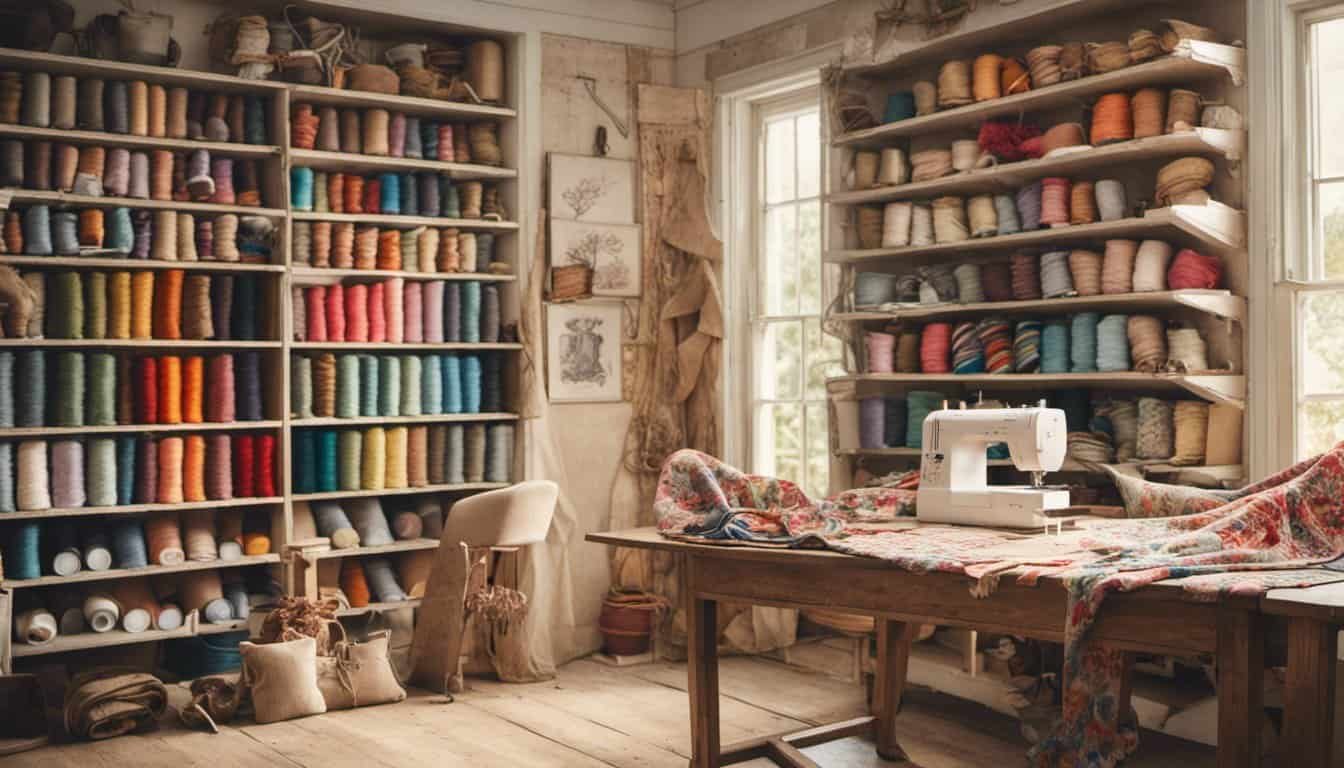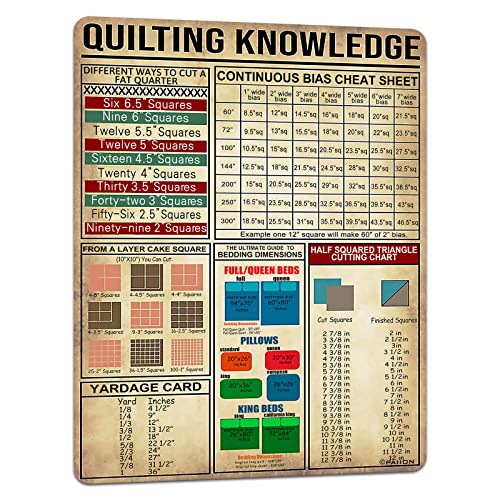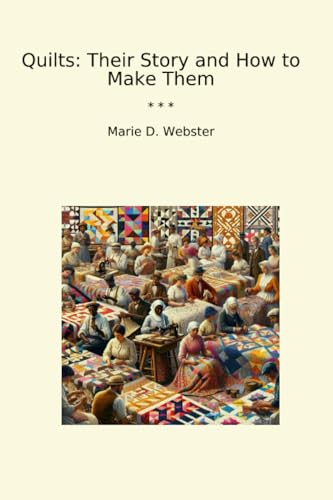Quilting has woven its way into the heart of American culture, offering more than just warmth and comfort. Have you ever admired a quilt’s intricate patterns and wondered about its story? It’s a tradition that dates back centuries, reflecting the creativity and resilience of those who crafted each piece.
As you explore the rich history of quilting, you’ll discover how it became a symbol of community and artistry. From the early settlers stitching together scraps to create functional blankets, to the vibrant quilt shows that celebrate this timeless craft today, quilting has always been a way to express identity and preserve heritage.
Join us on a journey through the threads of time to understand how quilting transformed into a beloved American tradition that continues to inspire and connect people across generations.
The Origins Of American Quilting
Quilting in America began with early settlers who needed durable bedding. These pioneers crafted quilts from available scraps, ensuring warmth during harsh winters. Functional and practical, these early quilts often featured simple patterns like the Nine-Patch and Log Cabin, which provided both stability and ease of creation.
African American communities significantly influenced American quilting. Enslaved women introduced intricate African-inspired motifs, such as bold geometric shapes and vibrant colors. These designs enriched the quilting tradition, blending practicality with artistic expression.
During the 19th century, quilting became a communal activity. Women gathered in quilting bees to share techniques and socialize. This era saw the emergence of regional styles, including the Baltimore Album Quilt with its elaborate imagery and the Appalachian Quilt known for its sturdy, patchwork designs.
The Great Depression marked a pivotal moment for American quilting. The Works Progress Administration (WPA) supported quilt-making as part of its federal art projects. This initiative not only provided financial relief but also elevated quilting to a recognized art form, preserving numerous traditional techniques.
Key milestones in American quilting history include:
- 1630s: First European settlers introduce quilting to America.
- 1800s: Growth of regional quilting styles across different states.
- 1930s: WPA promotes quilting as a national art.
- 1950s: Revival of traditional quilting amid modernist trends.
- 2000s: Contemporary quilting gains widespread appreciation and innovation.
Today, American quilting honors its roots while embracing modern advancements. From machine quilting to modern fabric technologies, the tradition continues to evolve, reflecting the diverse and dynamic nature of American culture.
Evolution Through The Decades
Quilting transformed alongside American society, reflecting technological advancements and cultural shifts. Each decade introduced new styles and methods that enriched the quilting tradition.
19th Century Quilting
In the 1800s, quilting became a key communal activity as women formed quilting bees. Regional styles like Baltimore Album, Amish, and Hawaiian quilts surfaced, each featuring unique patterns and techniques. The advent of sewing machines increased production speed, enabling more intricate designs and broader participation across communities.
20th Century Innovations
The 1900s brought synthetic fabrics and new materials, expanding quilt design possibilities. The Works Progress Administration in the 1930s elevated quilting to an art form, providing support to artisans and communities. Post-World War II saw a revival influenced by modern aesthetics, while the late century introduced quilt guilds and garnered international recognition, cementing quilting’s role in contemporary American culture.
Cultural Significance Of Quilting
Quilting plays a vital role in preserving and celebrating American culture. It serves as a medium for community engagement and personal expression, reflecting the nation’s diverse heritage.
Quilting And Community Building
Quilting fosters strong community bonds. You’ll find quilting bees where individuals gather regularly to collaborate on projects, sharing skills and stories. These gatherings promote teamwork and mutual support, reinforcing social connections. Additionally, quilt guilds organize events, workshops, and exhibitions, providing platforms for enthusiasts to connect and grow together. Through these interactions, quilting creates a sense of belonging and collective identity among participants.

Quilts As Storytellers
Quilts convey narratives and preserve histories. Each pattern and color choice often symbolizes personal or cultural stories, allowing you to express experiences and traditions. For example, the Log Cabin design represents simplicity and functionality, while Hawaiian quilts showcase vibrant colors and intricate motifs influenced by native art. By incorporating personal symbols and regional styles, quilts become tangible records of individual and community identities. This storytelling aspect ensures that quilting remains a meaningful and enduring art form within American tradition.
Influential Quilters And Iconic Quilts
American quilting features numerous influential quilters and iconic quilts that have shaped the tradition.
Notable Quilters
- Harriet Powers: Crafted the “Bible Quilt” (c. 1870), showcasing biblical stories through detailed applique.
- Gee’s Bend Quilters: Includes Beulah Bell and Annie Mae Young, known for bold patterns and improvisational styles.
- Faith Ringgold: Combines quilting with storytelling, addressing social issues in works like “Tar Beach.”
Iconic Quilts
Several quilts stand out as symbols of American quilting:
| Quilt Name | Creator | Notable Features |
|---|---|---|
| Bible Quilt | Harriet Powers | Biblical motifs, vibrant applique |
| Black Hawk Quilt | Unknown | Symmetrical patterns, star and diamond motifs |
| Gee’s Bend Quilt | Gee’s Bend Quilters | Bold colors, improvisational designs |
| Tar Beach Quilt | Faith Ringgold | Storytelling elements, social themes |
These quilters and their creations inspire and influence the quilting community today.
Quilting Today: Preserving Tradition And Embracing Modernity
Quilting today bridges the gap between heritage and innovation, ensuring the tradition thrives while adapting to contemporary tastes.
Maintaining Traditional Techniques
Unlock Expert Secrets: Top Tips from Veteran Sewers You Need to Know Today »
Quilters preserve heritage by using time-honored methods and patterns. Techniques like hand piecing and applique remain central, allowing you to create pieces that honor historical designs. Workshops and guilds offer classes on classic styles, ensuring skills pass to new generations.
Embracing Modern Innovations
Modern quilters incorporate new technologies and materials, expanding creative possibilities. Digital fabric printing enables custom patterns, while sewing machines with advanced features streamline the quilting process. Innovations like laser cutting and embroidery machines add precision and detail to modern quilts.
Flourishing Quilting Communities
Online platforms and social media connect quilters globally, fostering collaborations and sharing inspirations. Virtual guilds host challenges and virtual quilt shows, making it easier to participate regardless of location. Local quilting groups continue to organize meetups and events, strengthening community bonds.
Education and Skill Development
Educational resources have expanded, offering diverse learning opportunities. Online tutorials, webinars, and virtual classes make quilting accessible to everyone. Institutions like the American Quilter’s Society provide certifications and workshops, supporting quilters in honing their craft.
Integration with Contemporary Art
Quilting intersects with modern art, allowing for personal expression and cultural commentary. Artists use quilts to address social issues, experiment with abstract designs, and blend various art forms. This fusion elevates quilting as a versatile medium in the art world.

Economic Impact of Quilting
Quilting contributes significantly to the economy through sales of fabric, tools, and finished products. Many quilters run successful businesses, selling quilts, patterns, and supplies online and at craft fairs. The market for quilting supplies was valued at approximately $1.2 billion in 2023.
| Economic Aspect | Description |
|---|---|
| Market Value | $1.2 billion (2023) |
| Online Sales Growth | 15% annual increase |
| Handmade Quilt Sales | Contribute to $300 million subset |
| Fabric Industry Impact | Generates significant revenue for textile producers |
Notable Contemporary Quilters
Today’s quilters blend tradition with innovation, creating impactful works:
- Judy Chicago integrates quilting with feminist art.
- Faith Ringgold uses quilts to narrate personal and cultural stories.
- The Quilter’s Guild of America showcases diverse styles and techniques.
These quilters inspire the community, demonstrating that quilting remains a dynamic and evolving art form.
Sustainable Quilting Practices
Sustainability gains importance, with quilters choosing eco-friendly materials and techniques. Upcycling fabric scraps reduces waste, while organic and recycled fabrics offer environmentally conscious options. Sustainable practices ensure quilting contributes positively to the planet.
Technological Advancements
Technology enhances quilting precision and creativity. Software like Adobe Illustrator assists in pattern design, while apps facilitate fabric selection and project planning. Virtual reality tools offer immersive experiences for learning and designing quilts.

Community Engagement and Philanthropy
Quilters engage in philanthropic efforts, donating quilts to shelters, hospitals, and disaster relief organizations. Community projects bring people together, fostering a sense of purpose and solidarity through collective quilting initiatives.
By balancing tradition with modernity, quilting continues to be a meaningful and vibrant American tradition, reflecting both its rich heritage and evolving creative landscape.
Conclusion
Quilting is more than stitching pieces together—it’s about connecting with a rich heritage and expressing your creativity. Whether you craft a simple patchwork or an intricate design quilting lets you be part of a tradition that spans generations. Embracing quilting means joining a community that values history and innovation. It’s a beautiful way to create something meaningful while honoring the past and inspiring the future. Dive into quilting and discover how this timeless art form can enrich your life and keep American traditions alive.

















